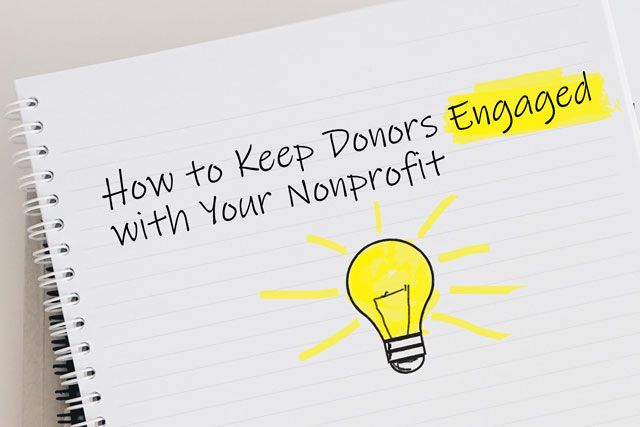How to Keep Donors Engaged with Your Nonprofit

If you’re scratching your head wondering why your donor retention rates are so low, join the club. Almost every nonprofit struggles to keep people from jumping ship. In fact, donor retention has averaged around 43% while donor attrition has remained steady at 57%. That means getting donors to stay onboard will always be an uphill battle.
That doesn’t mean you should surrender though. Donor retention can lead to stronger relationships in the community, an increase in funding, and more success with your mission. Because retaining donors can be difficult, it should be a top priority to do all you can to stay committed to your base. These 4 tips are intended to help you keep your donors engaged with your mission.
1. Thank Your Donors

First and foremost, thank your donors.
One of the leading causes for why donors don’t return is because their efforts aren’t recognized. Most people want to know their contributions matter. Studies show that only 32% of people will stay involved with your organization if you don’t thank them. That means you’re leaving 68% of the people you’ve already engaged with out in the cold.
While that statistic is staggering–on the other hand–if a donor receives a personal thank you within 48 hours, that person is four times more likely to donate again, according to the GuideStar Blog. That’s a 400% boost in renewal rates.
Yet, even with these stats, nonprofits still either forget or don’t take the time to thank their donors. There’s almost little to no effort involved in expressing your gratitude through an email or in person. Thanking your supporters should be your main priority.
2. Share Your Success

While most organizations might be modest or humble about their approach, there are times where it’s okay to brag about your accomplishments. If your nonprofit has accomplished something major, why not gloat to the world about it? Donors want to know their funding is being used for a good purpose. If you don’t reveal that to them, they won’t be as inclined to donate again.
One way of getting your accomplishments through to people is by telling your story. You’ll want to connect to people on an emotional level. If your organization is about finding adoption homes for pets, then show how donations have contributed toward building a shelter and how many successful adoptions you’ve had each year. You can even share personal experiences of your volunteers to convey what your nonprofit means to them.
3. Allow Donors to Voice Their Opinions

Everyone wants to know their opinions matter. If you aren’t doing all you can to communicate with your base of supporters, how can you relate to the people who matter most to your mission? Even if a person donates one dollar, ask them a few follow-up questions like, Why did you donate? What did you like? What didn’t you like? Was there anything you would change? By getting their advice, you can start to tap into your ideal donor’s mindset.
But you don’t have to stop there. You can also ask your volunteers, staff members, your board of directors, and so on. If you branch out to get others’ opinions, your organization can become more inclusive and appeal to a wider audience.
4. Run a Membership Program

What better way is there for someone to feel involved than to become a member? Having a membership program is a two-way benefit. Your nonprofit can earn a steady stream of income, and donors can become more engaged with your mission. With a membership, donors can have access to more exclusive outreach programs as well as promotions, giveaways, events, fundraisers, luncheons, and whatever else you want to promote.
When running a membership program, the best option is to make it easy to become a member. If you set it so the membership costs, say, $10 a month, that’s $120 a year in guaranteed revenue. Get some simple background information from each member, where they work, what kind of work they like to do, how they want to help your organization. That way, if they want to involve themselves more, you can assign them in an area where they can thrive. If they work for a trucking company, then you know who to ask for moving things. If they work in sales, then you know who to ask to volunteer for fundraising events. Make the membership beneficial to both you and the donor.
Finally
Keeping donors engaged is a battle but that’s not a reason to give up. Engaging donor’s interests is always changing, meaning you’ll have to keep searching for ways to adapt. While there are multiple approaches to engaging donors, you can never go wrong with thanking them, showing them their efforts matter, listening to them, and involving them. So stick with it and keep fighting for your cause because, if you don’t, who will?
Sources
www.causevox.com/blog/donor-retention-statistics/
www.thebalancesmb.com/how-to-get-first-time-donors-to-give-again-2501858
